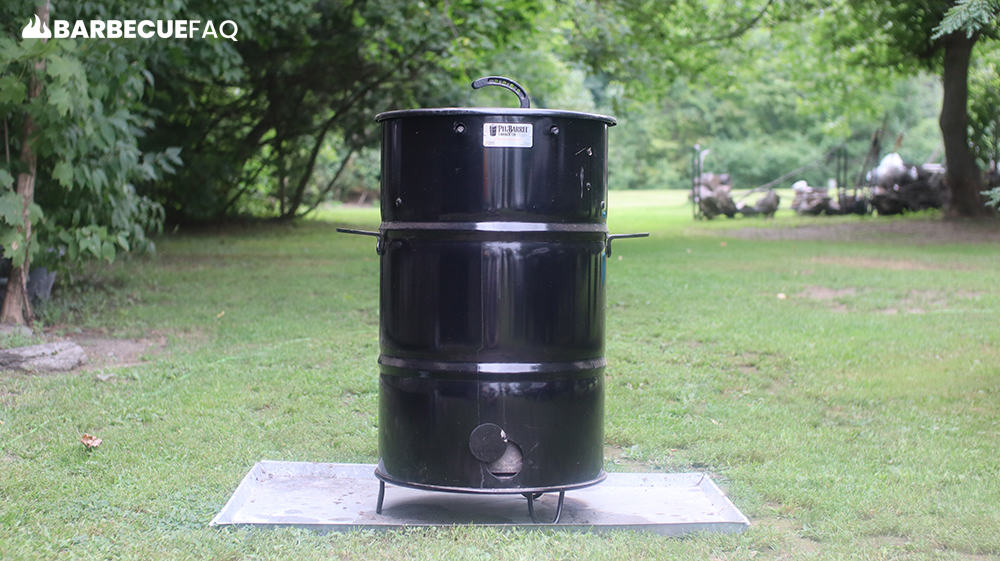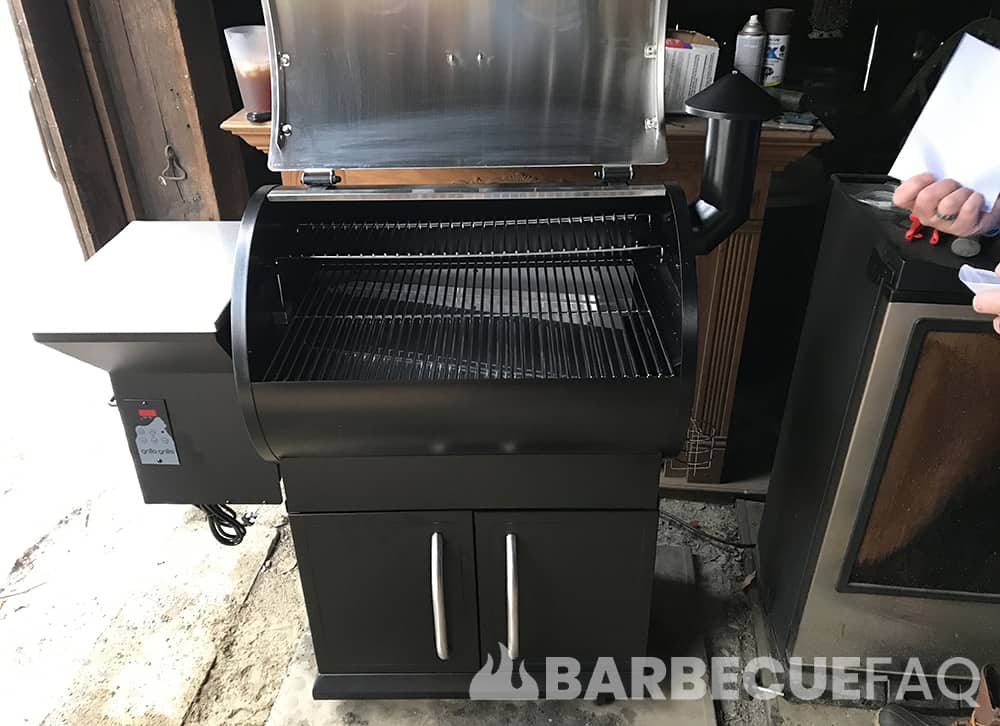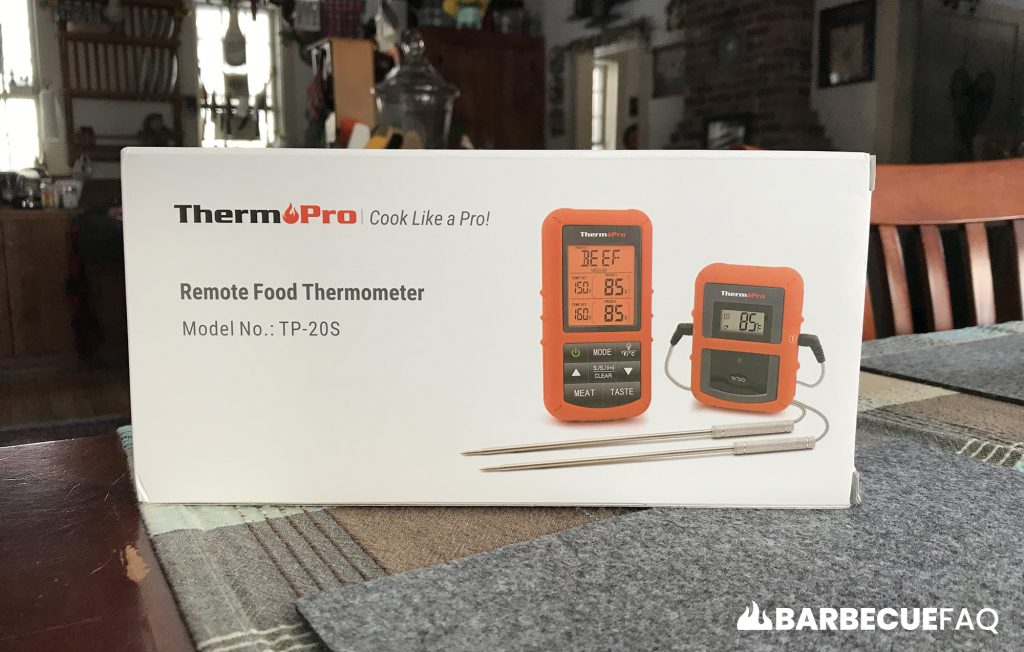Click a Grill to Learn More
Charcoal Grill
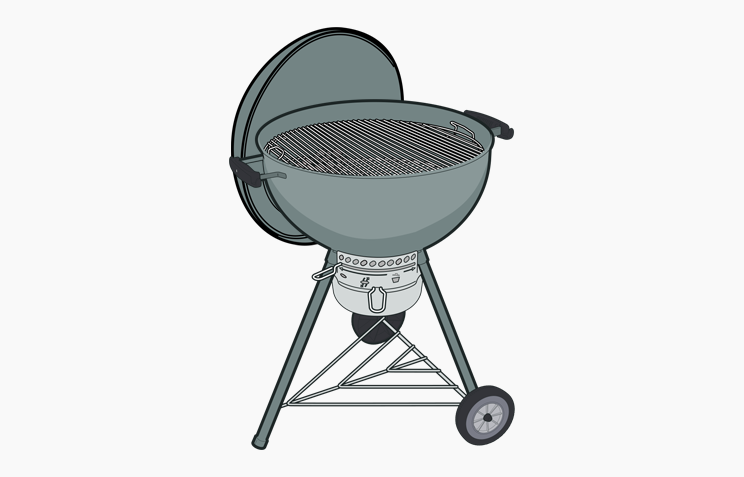
- Fuel Source: Briquettes or Lump Charcoal
- Average Upfront Cost: ~$200-$2000
- Ease of Use: Medium
- Average Warranty: 5 years
- Maintenance Requirements: Minimal
- Added flavor due to charcoal
Regardless of brand, a charcoal grill usually involves very few moving parts.
In a Weber Kettle the only moving part is the “one-touch cleaning system” and the exhaust/intake dampers.
This one-touch cleaning system is how the intake damper is controlled; The more open the intake damper is, the hotter the fire; The more closed the intake damper is, the cooler the fire – pictured below.

This system is somewhat of a learning curve, especially when you’re first starting out – but once you do, you’ll even be able to smoke on the grill without having to buy a dedicated smoker.
If you’re someone who primarily grills but is interested in smoking meat, the Weber kettle is a great option.
Maintenance
Charcoal grills tends to be the messiest option.
Lump charcoal and briquettes both produce ash as a byproduct – lump charcoal produces far less.
They will feature an ash pan of some sort where the ash is gravity fed to. The ash pan is then cleared after a few sessions and appropriately disposed of.
Apart from the ash, these grills don’t really have any other maintenance requirements.

Price and Warranties
The first Weber Kettle I received lasted me roughly 12 years – well beyond the estimated warranty on most parts.
Weber hasn’t really changed much about their design since 1952; Materials have also only improved.
The only part that failed me was the one-touch cleaning system. Their warranty is for 5 years of no rust or burn through; Yet it lasted me 12 years before failing.
Flavor
An area where charcoal supersedes other grills is with taste.
Searing is an area where gas and pellet grills – for lack of a better word – stink at.
Charcoal grills allow for more direct infrared heat.
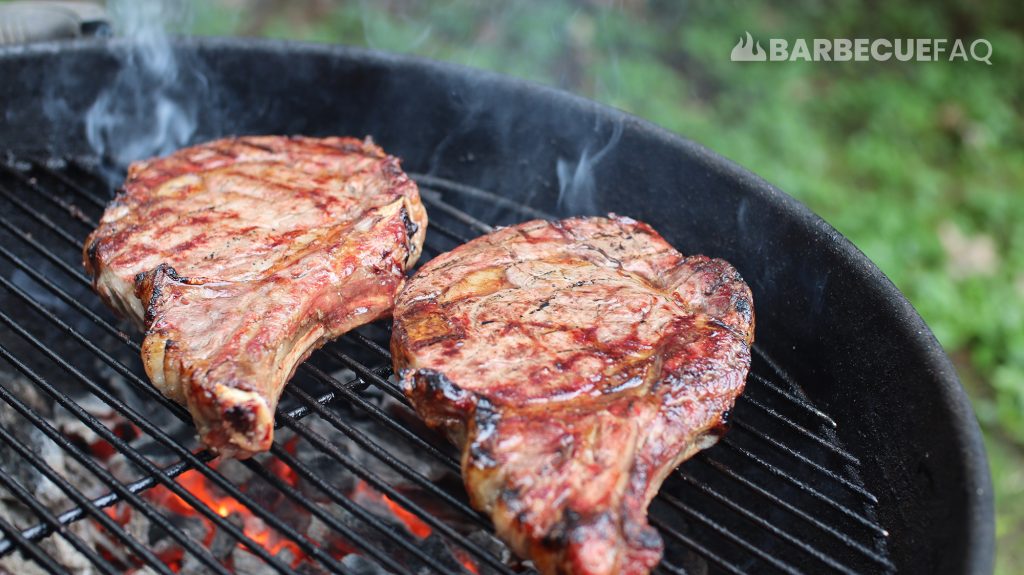
Charcoal also emits smoke – which offers a range of flavor molecules.
Where-as with gas there is no flavor; You simply get water and carbon dioxide.
Something else that’s often overlooked is the interaction between the food and the heat source.
With charcoal, the fat/spices/water/protein drip onto the hot coals and vaporize, that vapor then condenses on your meat.
Gas Grills
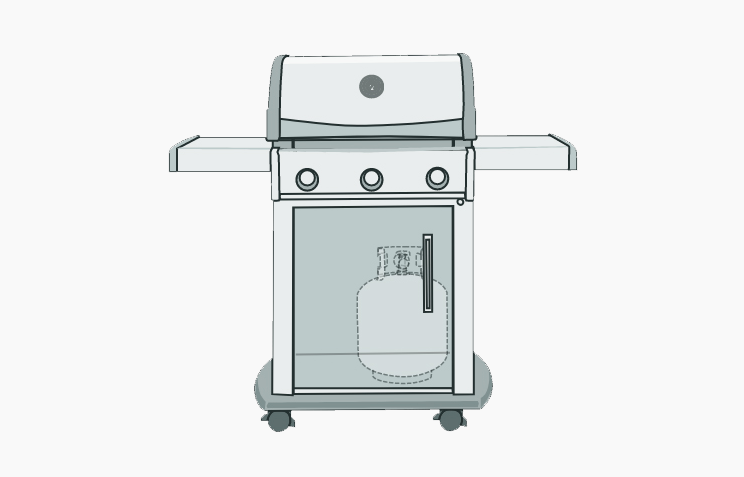
- Fuel Source: Liquid Propane or Natural Gas
- Average Upfront Cost: ~$200-$5000+
- Ease of Use: Easy
- Average Warranty: 1-10 years
- Maintenance Requirements: Minimal
Gas grills are the most popular type of grill sold.
They are capable of being started and ready to use in a matter of seconds. It’s usually as simple as opening the propane cylinder valve via the hand-wheel and then turning a dial on the grill to a desired level of heat.
A gas grill is fueled by either:
- Natural gas
- Liquid propane (commonly labeled as LP)
Natural gas is hooked up to your home’s utility gas line where-as liquid propane uses a 20 – 40 lb propane cylinder.
Maintenance
Gas grills are fairly easy to care for and usually have very few maintenance requirements.
The main thing to watch out for are the burners as rust, food, and debris can cause blockages over time.
Warranties
This will vary based on brand and their own standards for parts but typically charcoal grills have longer warranties because they have almost no moving parts; Gas grills have several.
Natural gas is sort of a different story as the upfront cost is typically 4-5x the cost of a mass produced liquid propane gas grill.
Brands like Lion or Napoleon come to mind and their warranties are usually 10+ years or lifetime on certain parts.
Kamado Grills
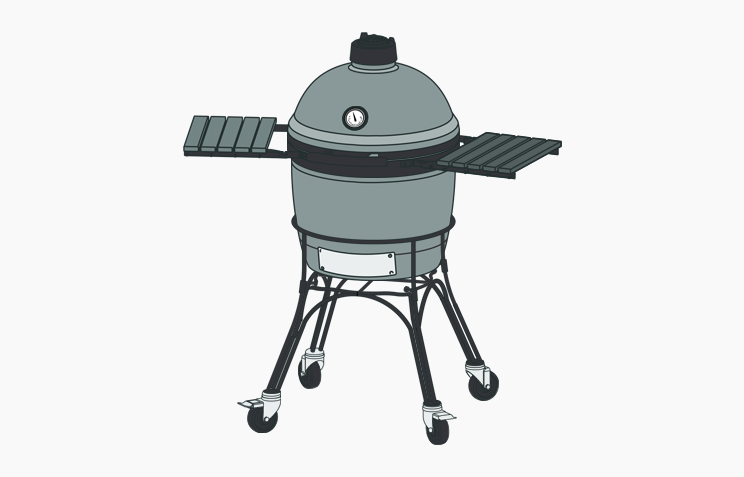
- Fuel Source: Briquettes or Lump Charcoal
- Average Upfront Cost: ~$500-$2000
- Ease of Use: Easy
- Average Warranty: 1 – Lifetime, depending on parts
- Maintenance Requirements: Minimal
- They’re heavy – often weighing 100-300 lbs
Apart from the difference in materials, Kamado grills work very similarly to regular charcoal grills.
They have an intake damper which allows oxygen to enter the grill – which is how temperature is regulated.
They also have an exhaust damper/vent where combustion gasses are allowed to escape. This causes a pressurized draft which pulls oxygen through the system.
Maintenance
These grills are quite easy to maintain.
In almost all cases, Kamado grill manufacturers will tell you to use lump charcoal rather than briquettes because of ash production.

Lump charcoal is simply carbonized wood – when it’s burned it produces very little ash.
In a Kamado, the ash pan is quite small; If you opted to use briquettes, it’s likely that you’d need to clean the ash pan before each grilling session.
Briquettes typically include additives that create more ash byproduct, which is more or less the enemy of airflow in tight spaces.
Which Brands to Consider?
There aren’t many brands in this space.
The major brands you’ll find are:
Ceramic is expensive and regardless of the brand you buy, they essentially all have offerings that range from $800 – $2000+.
With that said, most have long warranties, and in most cases limited lifetime warranties on ceramic parts.
Ease of Use
While these grills do have greater upfront costs, they are also quite easy to use.
Ceramic is great at retaining heat and provides strong insulative properties. There are a number of benefits to this like fuel efficiency and the conduction of heat.
Since ceramic takes a long time to transfer heat, you also use less fuel.
Being a poor conductor of heat means that it also radiates heat super slowly. This allows for the temperature to be controlled super easily with temperatures ranging from 225 – 750F.
While ceramic clearly has many advantages, the major disadvantage is that ceramic is very heavy. The brands above all have models that weigh anywhere from 100 – 300 lbs.
Meaning, once you find where you want to put it, it will likely stay their for the remainder of its useful life – which is a very long time.
Electric Grills
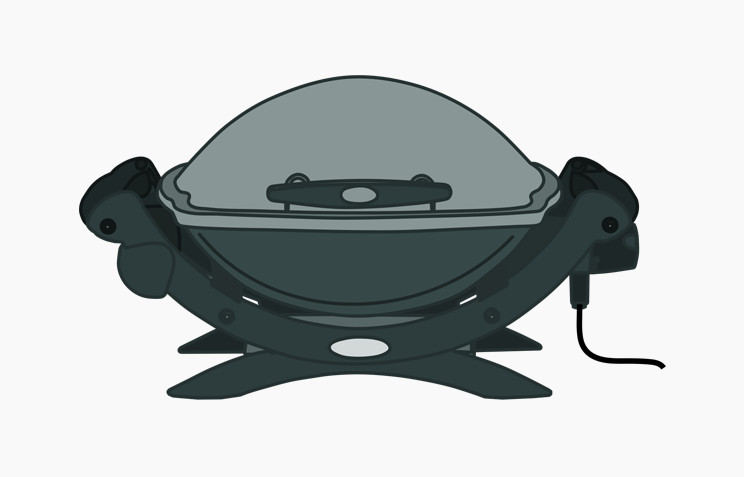
- Fuel Source: Electricity
- Average Upfront Cost: ~$100-$300
- Ease of Use: Very easy
- Average Warranty: 1 – 5 years
- Maintenance Requirements: Minimal
- Requires access to an outlet
If you live in a space or area where the use of gas or charcoal grills is restricted due to safety regulations, it may be your only option.
Electric grills are the easiest of any grill to use.
You simply plug it into an outlet, turn the grill on, dial your desired level of heat, and then wait.
These grills make use of a heating element that’s placed below a conductive grilling surface. These heating elements work through Joule heating.
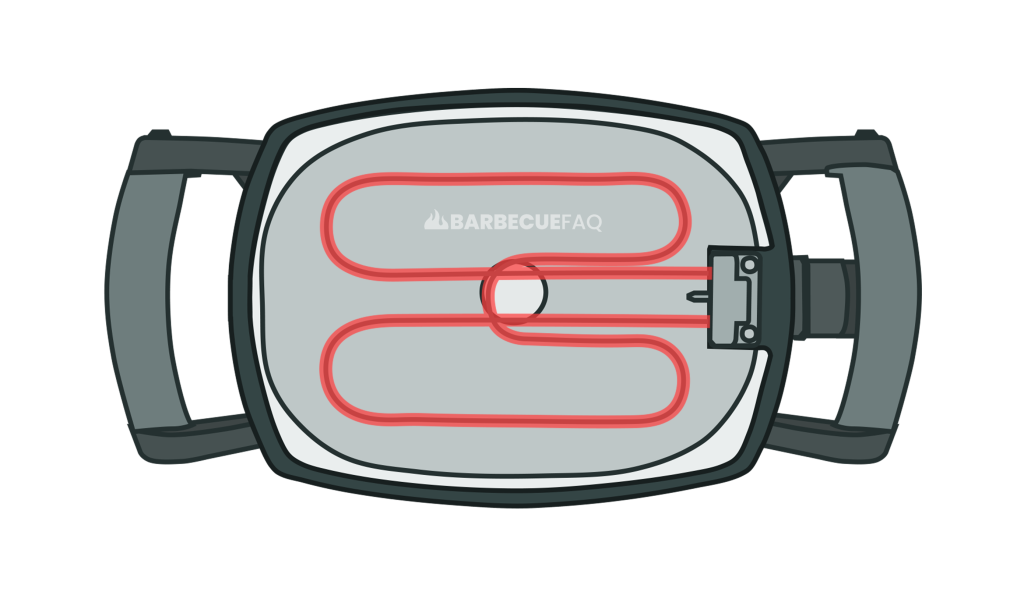
A major benefit is that there is no live fuel source like charcoal or gas and they produce very little smoke.
Keep in mind, falling debris like food that lands on the heating element can still produce smoke – only, without the flare-ups.
Meaning these grills to be used both indoors and outdoors.
The price of these units range from around $100 – $300+ with varying warranties. Usually the first thing to fail is the heating element.
For example, Weber’s Q series has a 2 year warranty on the heating element.
Pellet Grills
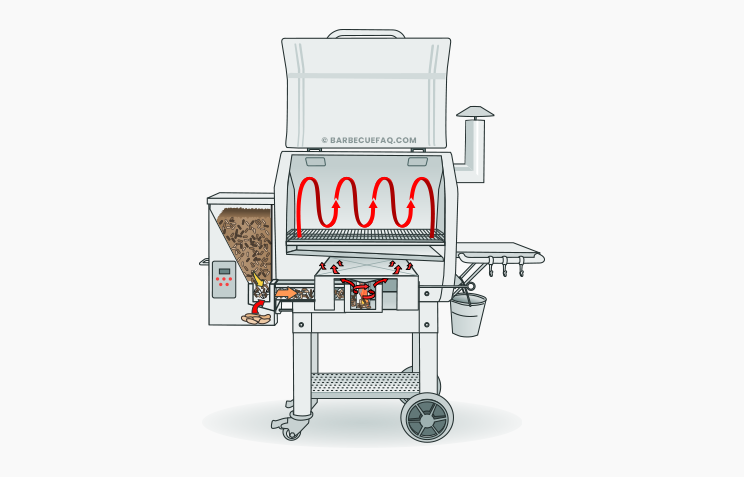
- Fuel Source: Hardwood Pellets
- Average Upfront Cost: ~$500-$3000
- Ease of Use: Easy
- Average Warranty: 1-5 years on certain parts
- Maintenance Requirements: Medium
- Can be a smoker or a grill
A pellet grill – often called a pellet smoker – is similar to a kitchen oven as it’s thermostatically controlled.
Meaning, you plug it into an outlet, set your temperature, and the grill cooks the food.
A pellet grill usually features the following moving components:
- An auger mechanism
- A fire-pot
- A combustion fan
In terms of non-moving parts, there is usually:
- A heat baffle placed above the fire-pot
- A drip pan (deflector)
A hopper is where “food-grade” wood pellets are stored. It then gravity feeds the pellets into an auger that pull them into a firepot.
The firepot features an igniter rod that ignites the pellets. This is then fed with oxygen via a combustion (intake) fan.
The baffle and drip pan create a convection of heat to cook or even smoke your food.
The smoke/heat then exit the grill via the smokestack.
Smoke Flavor When Grilling?
This might be controversial to say but the flavor introduced from wood pellets is super mild – especially if you’ve ever smoked with actual hardwood.
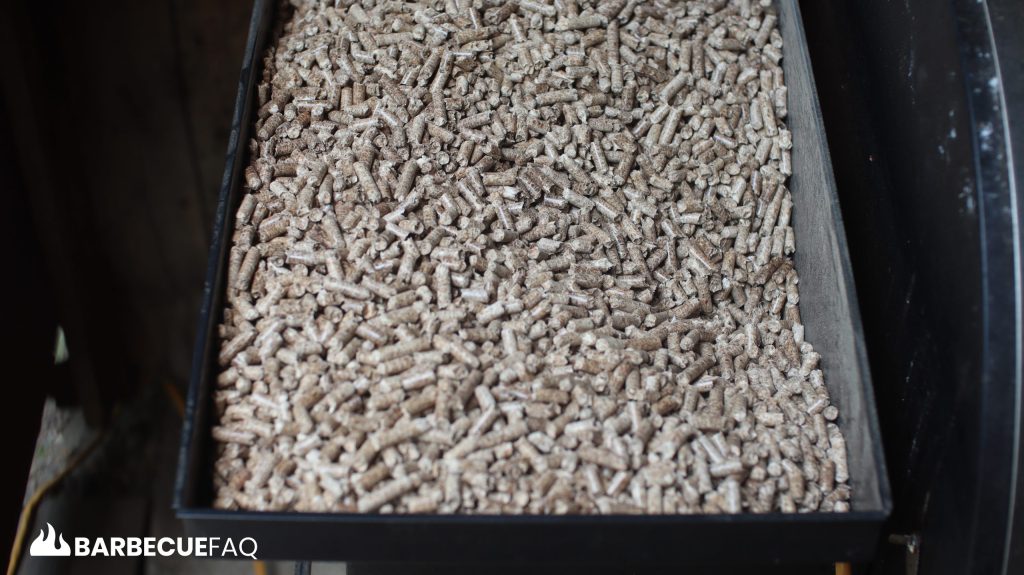
I’d wager to say that most folks are grilling things like Hamburgers, Hot Dogs, Steaks, Fish, etc. at higher temperatures.
The food doesn’t even have enough time to interact with smoke.
But “smoke modes” due exist to add more smoky flavor to your food.
Maintenance
Be prepared to buy and use a shop vac to remove pellet dust and debris.
Apart from that though, maintenance is pretty minimal.
Price
Since pellet grills are relatively new in terms of their offerings, be sure to avoid brands with gimmicky wording and pricing.
Stick to brands that offer solid materials, PID and non-PID modes, and strong warranties.
The above are factors I used when I went with the Silverbac back in 2020.
Other Brands to Consider:
There’s dozens more brands in this space though – above I listed a few of the more popular commercial options and some of the lesser known ones that are popular on “pellet-head” forums.
Something that folks tend to forget is the cost of pellets – these typically range from $10 – $30 per 20 lb bag of pellets.
I typically go with Lumberjack pellets at my local Runnings for $9.99/20 lb bag.
Portable Grills
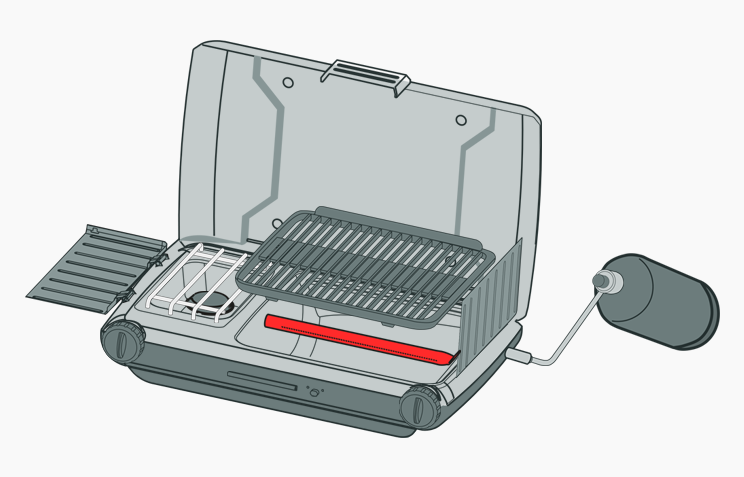
- Fuel Source: Liquid Propane, Charcoal, Pellets, Electricity
- Average Upfront Cost: ~$50-$500
- Ease of Use: Easy>Medium
- Average Warranty: 1-5 years
- Maintenance Requirements: Minimal > Medium
- Features highly depend on “version” of portable grill
Good examples include:
Even various Pellet grill manufacturers have started to create “Tailgating” versions – like the Trek from GMG or Traeger’s Ranger.
However, something like a pellet grill also implies that you have access to an outlet; The same could be said for Weber’s Q series.
In my opinion, the quintessential “portable” grill is something like Coleman’s propane grill.
It’s capable of being folded up and easily moved and the propane is contained in a small 16 oz propane cylinder (pictured below).

Even a Weber’s “Smokey Joe” is a small charcoal grill that’s perfect for campers or travelers.
The Coleman is what I use when I go Ice Fishing or camping.
Which Type of Grill Should You Buy?
It’s super hard to provide a definitive answer to this question, as all of these grills have their own set of applications and limiting factors.
For instance:
- Will the grill be in close proximity to an outlet?
- If not would you be able to use an extension cord?
If you answered no to these questions, a pellet grill likely isn’t an option; The same could be said for an electric grill if you plan to use it outside.
- What sort of budget do you have and what’s your experience level?
Charcoal grills are harder to use than gas grills and both have options available at both ends of the price spectrum. Where-as Kamado grills are just plain expensive.


